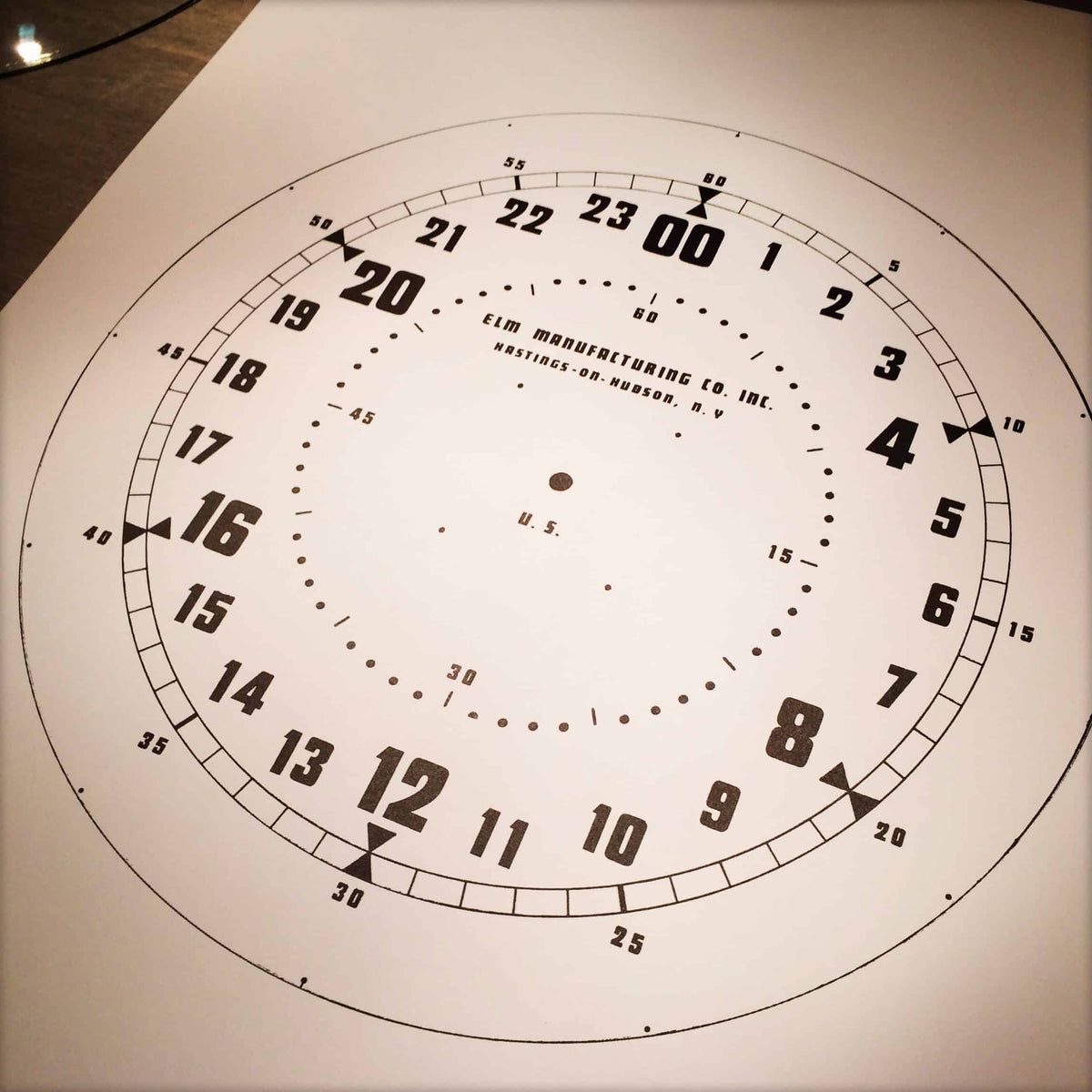Use this to reface your 1940s Elm Manufacturing Co. 24-Hour electric clock.
These clocks were often used in marine environments, so it's not uncommon to find them with water damage to the paper face. We've recreated these to match the originals as closely as possible, including the small imperfections in the handmade numbers and lines, and screen printed them on matching paper.
This is a flat, uncut sheet. There are hole indicators in the middle of the face for the motor stem to go through and four small holes for the motor mounting screws. Drill these points to install your clock hardware.
The original four mounting points for the motor are one-time use white plastic push rivets and will need to be removed and replaced with small machine screws and nuts.
You'll also find twelve marks around the parameter for mounting the metal face backer to the housing. You can drill these points in the paper face but it's recommended that you double check the position of your specific clock as these points are not always uniform between clocks.
You can see the process of replacing the face documented here
https://www.dangerpress.com/screen-printing-a-clock/
- Gallery
- Description

Use this to reface your 1940s Elm Manufacturing Co. 24-Hour electric clock.
These clocks were often used in marine environments, so it's not uncommon to find them with water damage to the paper face. We've recreated these to match the originals as closely as possible, including the small imperfections in the handmade numbers and lines, and screen printed them on matching paper.
This is a flat, uncut sheet. There are hole indicators in the middle of the face for the motor stem to go through and four small holes for the motor mounting screws. Drill these points to install your clock hardware.
The original four mounting points for the motor are one-time use white plastic push rivets and will need to be removed and replaced with small machine screws and nuts.
You'll also find twelve marks around the parameter for mounting the metal face backer to the housing. You can drill these points in the paper face but it's recommended that you double check the position of your specific clock as these points are not always uniform between clocks.
You can see the process of replacing the face documented here
https://www.dangerpress.com/screen-printing-a-clock/


